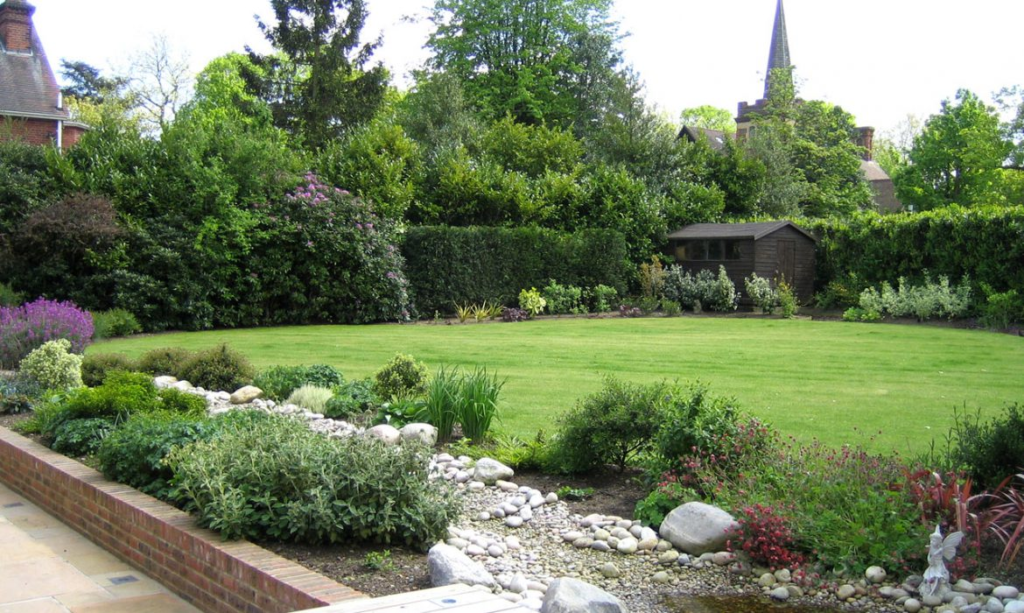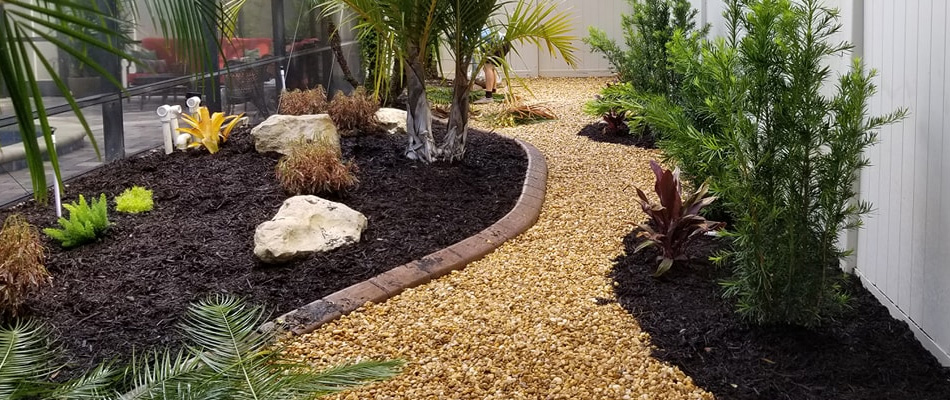Hilton Head Landscapes Things To Know Before You Buy
Hilton Head Landscapes Things To Know Before You Buy
Blog Article
The smart Trick of Hilton Head Landscapes That Nobody is Talking About
Table of ContentsThe smart Trick of Hilton Head Landscapes That Nobody is Talking AboutLittle Known Questions About Hilton Head Landscapes.A Biased View of Hilton Head LandscapesAbout Hilton Head LandscapesMore About Hilton Head LandscapesThings about Hilton Head LandscapesExcitement About Hilton Head LandscapesThe 5-Second Trick For Hilton Head Landscapes
Kind compatibility is also a major component of unity in designone or 2 noticeably different types are great for contrast and emphasis, however usually all other forms need to have some resemblances for an unified look. Appearance refers to exactly how coarse or great the surface area of the plant or hardscape material really feels and/or looks.
Examples of plants with coarse texture consist of philodendrons, agaves, bromeliads, hollies, hands, and hydrangeas. Hardscape with coarse appearance consists of rough-cut stone, rough-finished brick, and incomplete timber with knots and an increased grain. Matured or old building material that maintains a weather-beaten surface area is commonly crude in structure. Characteristics that develop great texture consist of little foliage; slim, strappy leaves (grasses) or high, thin stems; small, dense branches and small branches; long stems (creeping plants); and little, delicate blossoms.
About Hilton Head Landscapes
The majority of plants are medium appearance, because they can not be called having either crude or great texture. They are defined by medium-sized fallen leaves with simple shapes and smooth edges. The average-sized branches are not densely spaced nor widely spaced, and the overall type is commonly rounded or mounding. Medium-textured plants serve as a history to web link and link the coarse- and fine-textured plants.

To make an area feel smaller, put the coarse textures along the outer boundary and the great appearances closest to the visitor. The information of the coarse structure makes the plants show up closer and makes the area feel smaller sized. The regarded structure of plants can likewise transform with the range from the plant.
The Main Principles Of Hilton Head Landscapes
Strong shades enhance the contrast and make the appearance appear coarser, while soft colors can flatten structure. Hardscape with a crude texturesuch as really rough rocks and bold, big timberstends to make all plant product show up extra moderate textured. Designers often develop a texture research (Number 8) theoretically to help determine the arrangement of plant products.
Shade in plant product and hardscape adds rate of interest and variety to the landscape. Color is the most noticeable aspect in the landscape and is usually the focus of most homeowners; however, it is likewise the most temporary aspect, generally lasting only a few weeks a year for private plants.
7 Easy Facts About Hilton Head Landscapes Shown
A basic summary of the color wheel includes the three primaries of red, blue, and yellow; the three secondary colors (a mix of two primaries) of environment-friendly, orange, and violet; and six tertiary colors (a mix of one nearby main and additional shade), such as red-orange. Shade concept clarifies the relationship of shades to each other and how they ought to be used in a composition.

Analogous (in some cases called harmonious) color pattern are any kind of three to 5 shades that are surrounding on the shade wheel, such as red, red-orange, orange, yellow-orange, and yellow, or blue, blue-violet, and violet (landscaping hilton head sc). The colors are associated to every other due to the fact that they generally include two primaries mixed to form an additional and 2 tertiary colors, which implies they share usual residential properties
Complementary shades are frequently located normally in flowers; a common set is yellow and violet. Color is found in the flowers, vegetation, bark, and fruit of plants.
Unknown Facts About Hilton Head Landscapes
Eco-friendly foliage in all its different tones is the dominant shade by quantity, however various other shades record attention quicker due to their high comparison to the color green. Shade is likewise found in buildings, rocks, pavers, timber, and furniture. Many shades in all-natural materials, such as stone and wood, are typically soft and often tend to be variations of brownish, tan, and light yellow.
Shade is a vital aspect for developing passion and range in the landscape. Colors have properties that can influence feelings, spatial understanding, light high quality, balance, and focus. One building of shade is explained about temperaturecolors appear to be cool or cozy and can impact emotions or sensations. Great colors often tend to be relaxing and must be used in locations for relaxation and calmness.
More About Hilton Head Landscapes
The "temperature level" of colors can likewise influence the perception of distance. Trendy colors have a tendency to decline and are regarded as being farther away, making an area feel bigger. Cozy colors have a tendency to development and are regarded as being closer, making an area really feel smaller. Color can additionally be used to record attention and straight sights.
Bright yellow, which has the highest intensity, additionally has a high contrast with all various other shades (commonly defined as a "pop" of shade) and ought to be utilized moderately. A little amount of intense color has as much visual weight as a big quantity of an extra suppressed or weaker color.
Analogous (sometimes called unified) color design are any kind of three to 5 colors that are surrounding on the color wheel, such as red, red-orange, orange, yellow-orange, and yellow, or blue, blue-violet, and violet. The colors relate per other since they generally consist of two main colors blended to develop a secondary and 2 tertiary colors, which means they share usual residential or commercial properties.
Rumored Buzz on Hilton Head Landscapes
They tend to have high comparison in between them. The most typical collections are violet and yellow, red and environment-friendly, and blue and orange. Complementary shades are commonly found naturally in blossoms; an usual pair is yellow and violet. Shade is found in the flowers, vegetation, bark, and fruit of plants.
Eco-friendly vegetation in all its numerous shades is the dominant shade by quantity, yet various other colors catch attention quicker because of their high comparison to the shade environment-friendly - bluffton landscaping - https://www.pageorama.com/?p=h1tnhdlndscps. Color is also located in buildings, rocks, pavers, timber, and furniture. Many shades in natural products, such as rock and wood, are typically low-key and have a tendency to be variants of brown, tan, and light yellow
Hilton Head Landscapes for Dummies
Shades have homes that can impact emotions, spatial perception, light quality, balance, and emphasis. Cool colors have a tendency to be soothing and must be made use of in locations for leisure and peacefulness.
Great colors tend to decline and are perceived as being click for more info further away, making an area feel larger. Shade can likewise be utilized to record interest and direct sights - https://www.dreamstime.com/stevenagonzales6_info.
Intense yellow, which has the greatest intensity, likewise has a high contrast with all other colors (usually described as a "pop" of color) and need to be utilized moderately. A tiny quantity of intense shade has as much aesthetic weight as a big quantity of a much more controlled or weaker color.
Report this page